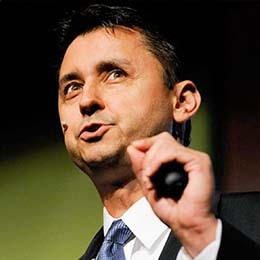Driving Intentional Team Development for Strategic Success

Effective team development is essential for strategic success. As organizations navigate complex stakeholder demands and continuous market disruption, team development becomes the mechanism by which organizations gain cohesion, clarity, and strategic impact.
Great teams are built, not born. Leaders who invest thoughtfully in team development create the conditions for sustainable success.
Our work with leaders across industries shows that intention matters. A proactive and principle-based approach to team development cultivates the resilience and accountability that lead to high performance. Below, we’ll unpack the multifaceted practice of team development and how to lead teams that thrive even under challenging conditions.
What Is Team Development and Why It Matters
Team development is the intentional process of shaping a collection of individuals into a unified, high-achieving entity. It combines clarity of goals, alignment of purpose, skill growth, trust-building, and adaptive feedback—all critical to performance.
While group development models (such as Bruce Tuckman’s stages of forming, storming, norming, and performing) can offer helpful framing, effective team development isn’t cyclical; it’s dynamic. Teams continually evolve based on external pressures, internal growth, and leadership behaviors. What’s critical is that team development is seen not as a one-time activity, but an ongoing practice.
Strong team development equips teams to:
- Maintain alignment despite change.
- Communicate with candor and respect.
- Confidently navigate ambiguity.
- Own outcomes and support one another to succeed.
Core Components of Effective Team Development
Shared Purpose and Goal Alignment
A team without a clear purpose can’t succeed. Teams excel when they understand not just what to do, but why it matters. Grounding work in a Wildly Important Goal® (WIG®) empowers teams to intentionally focus energy and execution momentum. Embedding WIGs into team development practices will align everyone around shared outcomes, fostering commitment and collective responsibility. Effective leaders who engage their teams around both individual and shared purpose can increase motivation, innovation, and retention while ensuring personal effectiveness and team achievement.
Learn more about aligning your teams around shared initiatives and unleashing high performance when you download our free guide, 4 Steps to Refine and Execute Your Team Goals.
Open Communication and Feedback
Effective teams communicate early, honestly, and with consistency. Frequent, structured communication enhances team trust—a crucial component of effective team development. It’s critical for leaders to model transparency through performance check‑ins, 1-on-1 meetings, and candid conversations. By setting the stage for transparency and ensuring leaders can both give and receive feedback with grace and tact, leaders can ensure all team members are on the same page and value the opportunity to grow together.
Help your leaders connect with and engage their direct reports with purpose when you download our free guide, 6 Key Communication Phrases to Build Trust and Inspire Your Team.
Accountability and Ownership

Accountability is a driving force for producing results. But few leaders realize that the greatest driver is the team’s accountability to each other—the determination to fulfill a commitment and avoid letting down their teammates.
Principled team development promotes ownership. Teams focused on WIGs track and act on lead measures (high-impact, predictive behaviors), make weekly execution commitments to maintain a cadence of accountability, and visibly track progress on a compelling scoreboard. This structure transforms team development and execution into a measurable, repeatable practice. Ensuring leaders foster accountability at work and create an environment where risks and failures are seen as opportunities for growth, allowing teams to feel supported and responsible for outcomes without shouldering blame or worrying about negative impacts.
Discover how leaders can take accountability for what’s in their control and inspire their teams to do the same in our free guide, How Effective Leaders Get Results: 7 Ways to Be More Proactive.
Trust as a Performance Multiplier
There’s a reason why trust is seen as a hot commodity—and a precious form of currency—in professional environments. Without trust, teams guard communication and act with suspicion; this slows productivity, divides teams, hinders innovation, and amplifies disengagement. And given the growing trust gap, building a high-trust culture is seen as both a business imperative and a performance multiplier.
Trust is what moves teams from cooperation to collaboration. It’s built through integrity, intent, and capability. It enhances communication, engagement, and innovation—integral qualities developed intentionally through team development. Leaders looking to develop impactful relationships with their teams should actively seek ways to build trust—like demonstrating compassion, expressing clear expectations, and modeling accountability themselves—in conversations with their direct reports.
Learn how your leaders can inspire their teams to meet shared goals when you download our guide, 6 Ways Your Leaders Can Build Trust and Avoid Breaking It.
Developing a Structured Team Development Plan
A strategic team development plan ensures regular, measurable progress through deliberate design. It’s a repeatable roadmap that transforms team potential into sustained performance. While every team is unique, the core components of a high-impact development plan remain consistent: assess, align, activate, and adapt. Let’s explore these four basic stages in a bit more depth.
1. Assess Current Team Dynamics
Effective team development begins with awareness. Leaders must first understand the team’s current state, including its strengths, blind spots, energy levels, and interpersonal dynamics. This diagnostic phase helps leaders identify root causes rather than symptoms, informing a development approach that is both relevant and targeted.
Assessment tools and methods might include:
- Pulse surveys: Quick, regular snapshots of team morale, alignment, and clarity.
- 360-degree feedback: Comprehensive views into how individuals experience each other’s leadership and collaboration.
- 1-on-1 conversations: Trust-building discussions that reveal individual perspectives on team culture and performance.
- Team effectiveness diagnostics: Structured instruments can assess alignment, trust, and execution readiness.
The goal here isn’t to critique. It’s to create a shared understanding of the current state from which team development can launch.
2. Set Clear, Aligned Development Objectives
Once a team has assessed its current state, the next move is to set a focused path forward. Clarity is transformational for teams. Without shared clarity, energy diffuses. With it, teams channel their efforts toward meaningful, measurable outcomes. This is where effective team development begins to accelerate.
Effective objectives serve as the North Star for team development and should:
- Be Specific and Wildly Important: Define what success looks like. Ask informative questions like, What is the single most important result this team must deliver over the next three to six months? This prioritization cuts through noise and builds focus.
- Include Lead Measures: Don’t just track outcomes (i.e., lag measures); define the behaviors that drive those outcomes. For instance, if improving customer retention is a goal, a lead measure might be centered around the frequency of proactive client outreach. Rather than measure progress after the fact, tracking lead measures allows teams to assess what’s happening in real time to adjust as needed and achieve more wins.
- Involve a Visible Scoreboard: People play differently when they’re keeping score. As such, teams stay motivated when they can see exactly where they stand. A compelling scoreboard—simple, visible, and regularly updated—makes development progress tangible.
- Create a Cadence of Accountability: Weekly accountability sessions that review progress being made and outline what needs to be done will reinforce the behavioral commitments that fuel goal achievement.
Example in Action:
A product team preparing for a market launch identifies a WIG: “Successfully release Product X by end of Q4 with zero critical post-launch issues.” Supporting lead measures include holding cross-functional alignment meetings on a biweekly basis to ensure integration across engineering, marketing, and support, as well as completing risk assessments for each feature two weeks before development sprints. Weekly scoreboards track progress toward these behaviors, while 1-on-1s surface issues and support timely course corrections.
By grounding development objectives in proven frameworks, leaders ensure team development is not just aligned but actionable and capable of producing measurable transformation.
3. Activate with Tailored Learning and Development Initiatives
With goals in place, the vision must now be brought to life through intentional experiences. Effective team development includes both formal learning and everyday practice.
Implementation strategies may include:
- Skill-Building Workshops: Live or digital sessions focused on critical team capabilities such as receiving feedback, emotional intelligence, agile execution, or decision-making. View FranklinCovey’s live and On-Demand webcasts.
- Experiential Learning: Activities such as simulations, off-site retreats, or cross-department challenges allow teams to apply concepts in dynamic, real-world contexts.
- Peer Coaching and Feedback Circles: Encourage accountability and self-reflection by pairing team members to provide constructive feedback and support on development goals.
The aim is to embed growth into the team’s rhythm—not as a separate initiative, but as part of how work regularly gets done.
4. Monitor, Measure, and Adapt
Like any strategic process, team development demands ongoing evaluation. Leaders must track both tangible outputs and behavioral shifts to understand what’s working and what needs adjusting.
Key indicators can include the following:
- Engagement metrics: Is morale rising? Are people contributing more proactively?
- Execution scores: Are lead measures being hit? Are team scoreboards moving in the right direction?
- Trust and communication quality: Are feedback conversations happening more frequently? Are difficult conversations becoming more productive?
- Staff retention and development: Are team members staying, growing, and delivering results?
Regular team check-ins often provide structure for this reflection. It’s also a time to celebrate wins, recalibrate misaligned efforts, and renew commitment. Just as teams evolve, so must the development plan. Great teams stay agile by reassessing and refining their path forward.
The Most Trusted Leadership Company
Learn how your organization can use our people, content, and technology to create collective action and meaningful change.

The Leader’s Role in Team Development

Leadership is communicating to people their worth and potential so clearly that they come to see it in themselves.
At the heart of every high-performing team is a leader who is intentional. Team development succeeds—and sustains that success—when leaders move from managing tasks to empowering people. Strong leaders model behaviors they wish to see and cultivate action-oriented structures.
Develop a Leader’s Mindset
Team development begins with how leaders see their role. Shifting from “I’m responsible for results” to “I’m responsible for the people who deliver results” transforms how leaders approach team culture, performance, and growth. This mindset encourages a long-term view by investing in individual potential, recognizing strengths, and creating an environment where team members thrive.
Empower your new leaders to succeed in their roles when you download our guide, 6 Shifts to Develop a Leader’s Mindset.
Hold Regular 1-on-1s
Intentional 1-on-1s are a cornerstone of effective team development. These structured check-ins foster trust, uncover roadblocks, and align personal and team goals. Far from being status updates, they are moments to coach, build trust, celebrate wins, and deepen relationships. They allow leaders to provide feedback in context and tailor support to individual development needs.
Schedule more effective meetings with your team members when you download our free guide, 100+ Questions for Better 1-on-1s with Your Direct Reports.
Set Up Your Team to Get Results
Our research indicates that only 15% of employees know their organization’s most important goals. Leaders play a pivotal role in structuring the conditions that allow their teams to succeed. This includes clarifying roles, creating clear expectations, and ensuring accountability systems are in place.
Learn how to create a winnable game and align teams around top initiatives with our guide, Execute Your Strategic Goals and Create Breakthrough Results.
Create a High-Trust Culture of Feedback
High-trust teams give and receive feedback often and constructively. Leaders must model and normalize feedback as a two-way practice. Incorporating regular feedback conversations encourages learning and growth. This is essential for ensuring employees feel seen, heard, and supported while amplifying developmental momentum.
When you foster agility, trust, and accountability in your teams, feedback is valued and implemented for enhanced results. Download our free guide, The 4 Pillars of a Thriving Workplace Culture, to learn how today’s most successful organizations enhance performance through cultural development.
Lead Your Team Through Change
The only constant in both life and business is change. In times of transition, team development becomes even more important. Whether teams are facing new leadership, shifting strategies due to external factors, or evolving roles based on emerging needs, change leadership provides both direction and understanding. By narrating the “why” behind change and involving the team in shaping the “how,” leaders build resilience and shared ownership.
From AI to economic instability, today’s organizations are navigating more uncertainty than ever. Download our free guide, The Energy of Change, to learn the five leadership behaviors that drive collective action in a fluid landscape.
Overcoming Common Challenges in Team Development
Even the most committed leaders will encounter setbacks during the team development journey. Rest assured, these challenges aren’t signs of failure. Instead, they’re invitations to lead with greater clarity, trust, and intention. Our proven frameworks provide practical solutions to help leaders address and overcome these common hurdles, turning them into catalysts for deeper growth and cohesion.
Misalignment on Goals
When team members don’t share a common purpose or don’t understand how their work contributes to larger objectives, confusion and frustration set in. This misalignment drains energy and often causes good intentions to go awry. WIGs, scoreboards, and regular check-ins are proven levers in team development to sustain focus. By celebrating behaviors that contribute to strategic focus and course-correcting when efforts drift, effective leaders can prevent misalignment and facilitate synergy between team members.
Are your teams aligned around the right activities? Reveal which behaviors will drive focus and make the greatest impact with our 80/20 Activity Analyzer tool.
Disengagement
Disengagement doesn’t always look dramatic and obvious. Employee disengagement can be subtle; it’s often reflected in reduced participation, hesitation to contribute, or waning enthusiasm. Left unaddressed, it undermines morale, productivity, and retention. Structured, meaningful 1-on-1 meetings feed positivity and progress, reinvigorating team development and reengagement. These conversations are not just about performance; they’re also about the people. When individuals feel seen and understood, reengagement follows. This approach to team development fosters emotional commitment, not just compliance.
Discover the hidden causes and costs of employee disengagement—and learn how to fuel reconnection—when you download The Art of Employee Engagement: A Practical Guide for Reckoning With “The Great Stay.”
Resistance to Change
Change fatigue is real—and fear often masquerades as friction. Team members often resist change because of this fear of the unknown, as well as feeling excluded from decision-making or having lost trust in leadership. This resistance, if mishandled, can halt team development in its tracks. Leaders who acknowledge the discomfort and respond with transparency accelerate the emotional transition. Understanding the predictable pattern of change, and knowing how to guide teams through change, is paramount for successful team development.
Are your leaders able to communicate change effectively and get their teams on board? Download our free tool, How to Communicate Change, to help them guide their teams through disruption.
Communication Breakdowns
Without healthy communication norms, even high-performing teams may stumble. Missed feedback, unclear expectations, or unresolved conflict can erode trust and slow progress. When communication falters, so does momentum in team development. Communication challenges are often rooted in fear: the fear of being misunderstood, offending others, or looking weak. Leaders must model and systematize open dialogue to counteract these tendencies. Over time, open communication becomes a team norm. As transparent communication and trust grow, collaboration deepens and team development accelerates as individuals learn to navigate conflict with confidence and mutual respect.
Workplace tensions can arise even among cohesive, high-performing teams. Learn how leaders can effectively maneuver through tough situations with our guide, Navigating Difficult Conversations: 4 Strategies to Tackle Tension With Confidence.
Develop Leaders Who Foster Team Development
When leaders treat team development as a strategic imperative and not just a checkbox to tick on their to-do list, they build empowered groups who are well-equipped for change and forward progress. Intentional routines that are rooted in clarity, trust, feedback, and execution will transform how teams work and deliver.
Ready to activate high-performing, cohesive teams in your organization? When you develop leaders who people choose to follow and unlock the full potential of your teams with group coaching, your organization can make a greater impact at every level. Contact us today to learn more.








